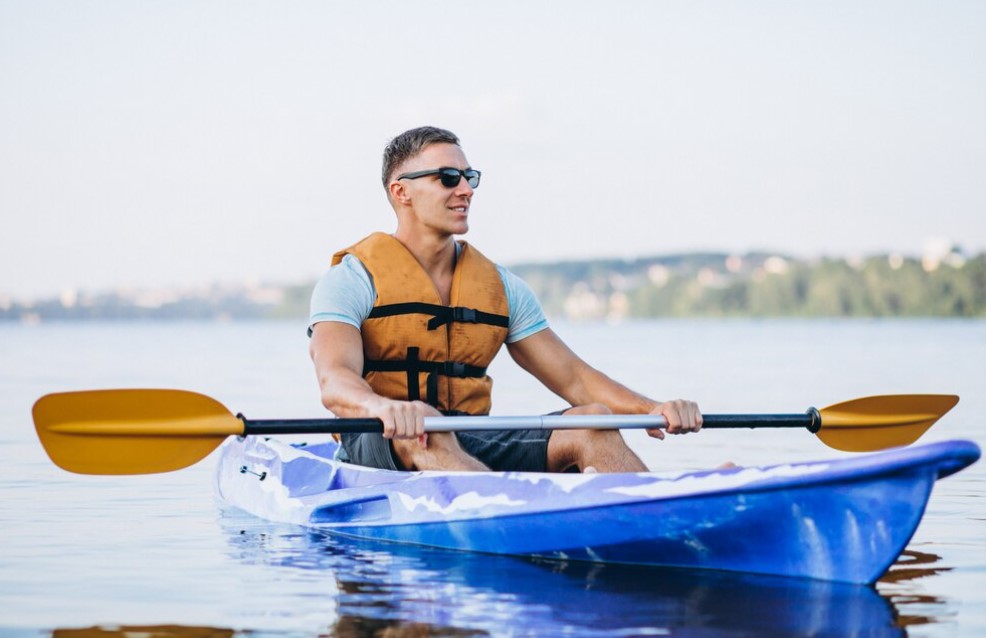Rowing offers different disciplines that cater to various skills, preferences, and experiences. Each one brings its own challenges and rewards. This article will glide through the main rowing disciplines, providing a glimpse into the diverse world of this enduring sport.
Sweep rowing
Sweep rowing has each athlete gripping a single oar with both hands. It coordinates closely with the rest of the crew to move the boat. Precise teamwork is essential here. The reason is that the synchronized effort of each rower is what keeps the boat steady and swift. Teams in this discipline come in different sizes.
The symmetry and teamwork in sweep rowing make it a compelling spectacle. Rowers must harmonize their strokes to an exact degree. The boat’s success relies on the team’s collective effort, making it a favourite in collegiate and international competitions.
Sculling
In contrast to sweep rowing, sculling sees each rower handling two oars, one per hand. This discipline allows for solo participation in pairs, fours, and quads. It demands high skill and control as rowers work to keep their strokes in harmony to navigate the boat effectively.
Sculling boats, or sculls, are generally smaller and more agile than sweep boats. This discipline requires much personal control and technical proficiency.
Adaptive rowing
Adaptive rowing opens the sport to athletes with disabilities, with specialized equipment and boats tailored to various needs. This inclusive branch of rowing ensures everyone has the chance to experience the water.
This inclusive rowing form highlights the sport’s versatility and the rowing community’s commitment to accessibility. Adaptive rowing has gained significant momentum and recognition, with events featured in the Paralympic Games.
Coastal rowing
Coastal rowing takes the sport out of the calm waters of lakes and rivers and into the open sea. Coastal boats handle rough water conditions. They provide a more adventurous and challenging rowing experience. This discipline tests rowers’ abilities to navigate waves, tides, and currents.
Competitions often involve longer distances and require rowers to have strength, endurance and a keen understanding of maritime environments. Coastal rowing is gaining popularity, particularly in regions with accessible coastlines.
Indoor rowing
Indoor rowing uses ergometers to simulate the action of rowing on water. It has become a competitive sport, with events attracting global participants. It is an essential training tool for rowers and a standalone competitive arena.
Indoor rowing provides a full-body workout. It is accessible year-round, making it an excellent option for those who wish to engage in the sport without water access. Indoor rowing also allows for detailed performance tracking. This feature makes it a valuable tool for rowers to improve their on-water performance.
Here is a table summarizing the types of rowing sports.
| Rowing Type | Number of Oars | Boat Size | Description |
|---|---|---|---|
| Sweep rowing | One | 2, 4, 8 | Team rowing with each rower using a single oar. |
| Sculling | Two | 1, 2, 4 | Individual or team rowing with each rower using two oars. |
| Adaptive rowing | One or two | Various | Rowing adapted for athletes with disabilities. |
| Coastal rowing | One or two | 1, 2, 4, 6 | Rowing in open sea conditions, challenging and adventurous. |
| Indoor rowing | N/A | Ergometer | Off-water rowing for training and competition. |
Conclusion
As you can see, the world of rowing sports is as vast as it is captivating. Each discipline offers a unique way to experience the essence of rowing.
Embrace the opportunity to connect with this multifaceted sport. Reach out to local rowing clubs, explore the various disciplines, and dip your oars into your chosen waters. Whether you seek the thrill of competition or the peace of a solitary row at dawn, the community is ready to welcome you aboard. Cast off from the dock, join the crew of passionate rowers, and chart your own course in rowing today!
